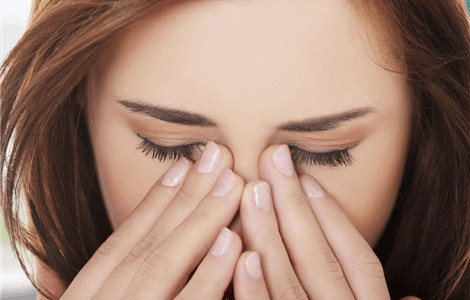
Eyelid swelling is a fairly frequent complaint, and it is generally caused by an allergy, inflammation, infection, or an injury to the eye. Your eyelid's skin is less than one millimetre thick, but it is flexible and elastic, which means that your eyelid has the potential to enlarge rather drastically. Here we talk about the possible causes of swollen eyelids and when to call our General Practitioner at home in Costa del Sol.
Causes of swollen eyelid
A swollen eyelid is often an indication of another medical problem, such as one of the following:
Conjunctivitis
Conjunctivitis is an inflammation or infection of the conjunctiva, which is the smooth, glossy, transparent membrane that covers the white of the eye (sclera) and the underside of the eyelids. There are many possible causes, including allergies and sensitivities (for example, to items that are applied to the eye) and infections.
The most common symptoms of conjunctivitis include redness in the eyes, as well as a grittiness and slight discomfort in the eyelids. Because conjunctivitis affects the underside of the eyelids, it can cause the eyelids to become puffy and a little red, either as a result of the infection spreading into the eyelid or as a result of the eyelid becoming inflamed or reacting in an allergic manner as a result of the infection.
Chalazion
If the chalazion gets inflamed or infected, it will create a lump or localized swelling in the eyelid, however it may cause swelling over the whole eyelid if it becomes inflamed or infected. Chalazion is a fluid-filled swelling that develops when one of the Meibomian (or tarsal) glands in the eyelid gets clogged, resulting in a tiny (2-8 mm) swelling that is fluid-filled (cyst). A chalazion is more prevalent on the upper eyelid than on the lower eyelid. It is not frequently accompanied by any redness, itching, or discomfort. If you think you have chalazion, call our General Practitioner at home in Costa del Sol.
Stye
A stye is a frequent painful eyelid condition that occurs when a tiny infection arises at the base of an eyelash, causing the eyelash to become inflamed and red, as well as the border of the eyelid around it. It has the appearance of a pus-filled area. The infection and inflammation, on the other hand, often travel back into the lid, causing the whole eyelid to swell. It is generally red and swollen, and it might feel somewhat uncomfortable at times. It is not contagious. If you think you have stye, call our General Practitioner at home in Costa del Sol.
Ectropion and entropion
Ectropion is a condition in which a portion or the whole lower eyelid moves outwards away from the eye. Entropion occurs when the lower eyelid curves back inward toward the eye, causing eyelashes to brush against and scratch against the front of your eye. In certain cases, the eyelids may become inflamed and somewhat swollen, however this is not normally noticeable, and they are seldom red or uncomfortable.
Blepharitis
Blepharitis is a medical term that refers to inflammation of the eyelids. When it comes to the eyes and eyelids, it makes them feel painful and gritty. They are often bloated, pink-red, and a touch swollen, especially around the margins of the eyelids. Blotchiness and redness around the eyes are common symptoms of blepharitis, which is often accompanied with other skin illnesses such as rosacea and seborrhoeic dermatitis. If you think you have blepharitis, call our General Practitioner at home in Costa del Sol.
Eyelid skin infection
Any infection of the skin of the eyelid would most likely result in significant swelling, as well as redness, itching, and pain. Infections that originate in other regions of the face may also travel to the eyelids.
It is possible to get infections of the skin such as cellulitis, impetigo, and erysipelas, which are various forms of skin infections that affect different layers of the skin. If the integrity of your skin is compromised for any reason, you are more prone to get a skin infection. The cause might be anything from an insect bite to an accident to a skin disorder that affects the area adjacent to the eye, such as eczema, chickenpox, and shingles.
Sinusitis
Sinusitis is often caused by bacterial or viral infection; however, it may also be caused by an allergic reaction. When sinusitis affects the sinuses right behind the eyes, it may produce puffiness around the eyes, which can impact the eyelids and cause them to droop. It is not uncommon for the eyelids to be red, painful, or itching.
When to call our General Practitioner at home in Costa del Sol
The swelling of the eyelids normally subsides on its own after a day or two. If the problem does not improve within 24 to 48 hours, call our General Practitioner at home in Costa del Sol. They'll ask you about your symptoms and examine your eyes and eyelids to determine the cause of them. As part of their investigation, they'll look for any signs of what's causing the swelling, such as skin changes or discomfort.